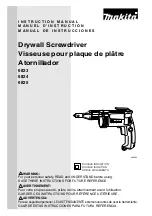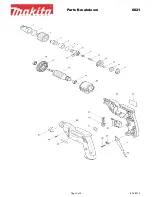
- 2 -
AL300ULXD
Installation Instructions:
Wiring methods shall be in accordance with the National Electrical Code/NFPA 70/NFPA 72/ANSI, and with
all local codes and authorities having jurisdiction. Product is intended for indoor use only.
1. Mount unit in the desired location. Mark and predrill holes in the wall to line up with the top two keyholes
in the enclosure. Install two upper fasteners and screws in the wall with the screw heads protruding. Place
the enclosure’s upper keyholes over the two upper screws; level and secure. Mark the position of the lower
two holes. Remove the enclosure. Drill the lower holes and install the three fasteners. Place the enclosure’s
upper keyholes over the two upper screws. Install the two lower screws and make sure to tighten all screws
(Enclosure Dimensions, pg. 4). Secure enclosure to earth ground.
2. Connect input power to the transformer. Secure green wire lead to earth ground. (Fig. 1, pg. 3).
For 115VAC input:
Connect Yellow and White leads from transformer primary to neutral.
Connect Blue and Black leads from transformer primary to line (Fig. 2, pg. 3).
For 230VAC input:
Connect Blue and Yellow leads of transformer together.
Connect White lead from transformer to neutral.
Connect Black lead from transformer to line (Fig. 3, pg. 3).
Green “AC” LED on power supply board will turn on. This light can be seen through the LED lens on the
door of the enclosure. Use 18 AWG or larger for all power connections (Battery, DC output).
Use 22 AWG to 18 AWG for power-limited circuits (AC Fail/Low Battery reporting).
Keep power-limited wiring separate from non power-limited wiring (115VAC, 50/60Hz or
230VAC, 50/60Hz Input, Battery Wires). Minimum 0.25” spacing must be provided.
3. Measure output voltage before connecting devices. This helps avoiding potential damage.
4. Connect devices to be powered to the terminals marked [+ DC –] (Fig. 1, pg. 3).
5. For Access Control applications batteries are optional. When batteries are not used, a loss of AC will result
in the loss of output voltage. When the use of stand-by batteries is desired, they must be lead acid or gel
type. Connect battery to terminals marked [– BAT +] (Fig. 1, pg. 3). Use two (2) 12VDC batteries connected
in series for 24VDC operation (battery leads included).
6. Connect appropriate signaling notification devices to AC Fail and Low battery supervisory relay outputs
(Fig. 1, pg. 3).
Maintenance:
Unit should be tested at least once a year for the proper operation as follows:
Output Voltage Test: Under normal load conditions the DC output voltage should be checked for proper voltage
level (Power Supply Output Selection chart).
Battery Test: Under normal load conditions check that the battery is fully charged, check specified voltage
both at the battery terminal and at the board terminals marked [– BAT +] to ensure that there is no break in the
battery connection wires.
Note: Maximum charging current under discharges is 600mA.
Note: Expected battery life is 5 years; however, it is recommended changing batteries in 4 years or less if needed.
LED Diagnostics:
Red (DC)
Green (AC)
Power Supply Status
ON
ON
Normal operating condition.
ON
OFF
Loss of AC. Stand-by battery is supplying power.
OFF
ON
No DC output.
OFF
OFF
Loss of AC. Discharged or no stand-by battery. No DC output.
Terminal Identification:
Terminal Legend
Function/Description
AC/AC
Low voltage AC input (28VAC / 100VA).
+ DC –
12VDC / 24VDC @ 2.5A continuous power-limited output.
AC Fail
NC, NO, C
Indicates loss of AC power, e.g. connect to audible device or alarm panel.
Relay normally energized when AC power is present.
Contact rating 1A @ 28VDC. AC or brownout fail is reported within 1 minute of event.
Bat Fail
NC, C, NO
Indicates low battery condition, e.g. connect to alarm panel. Relay normally energized
when DC power is present. Contact rating 1A @ 28VDC. A removed battery is reported
within 5 minutes. Battery reconnection is reported within 1 minute.
Low battery threshold:
12VDC output threshold set @ approximately 10.5VDC.
24VDC output threshold set @ approximately 21VDC.
– BAT +
Stand-by battery connections. Maximum charge current 0.7A.






















